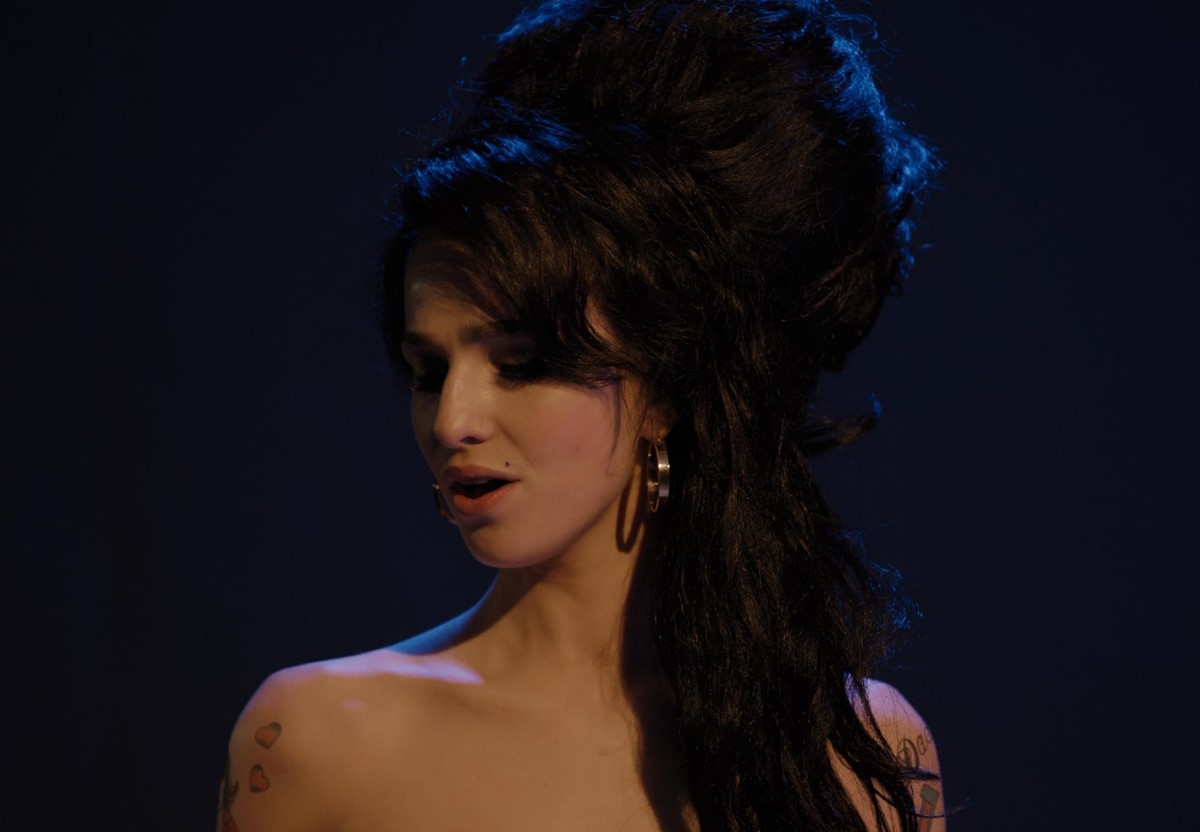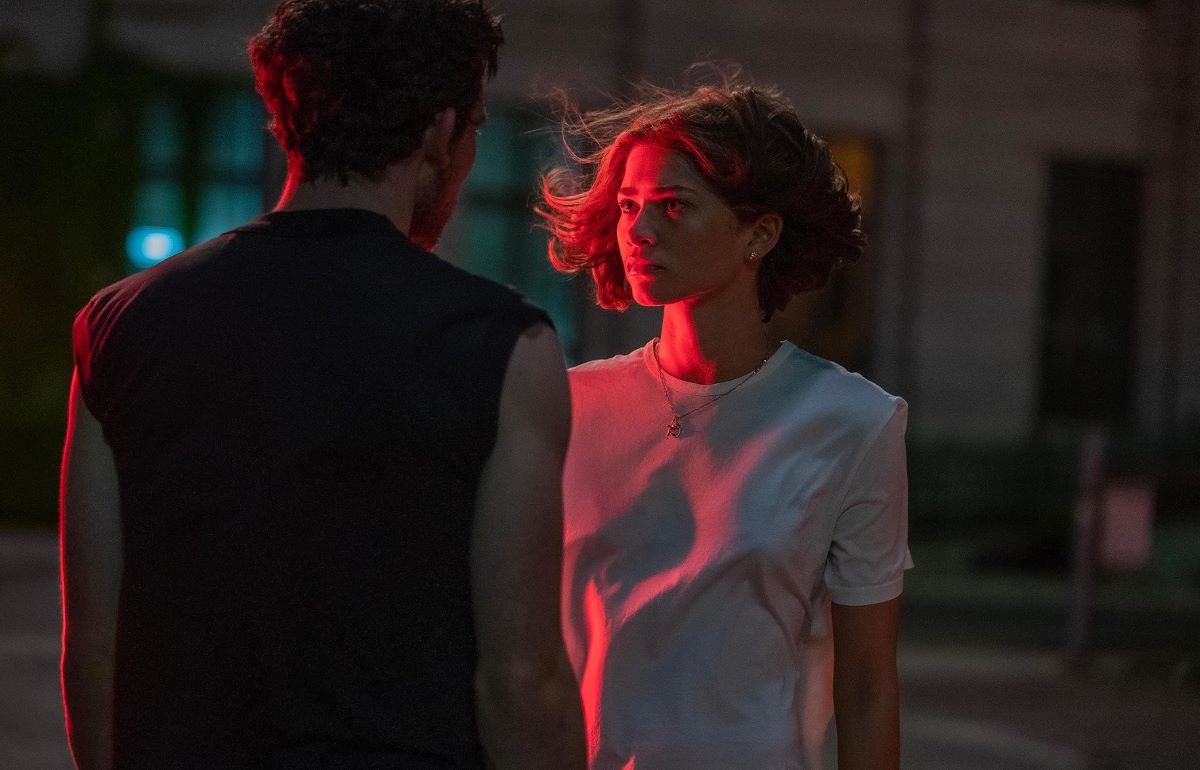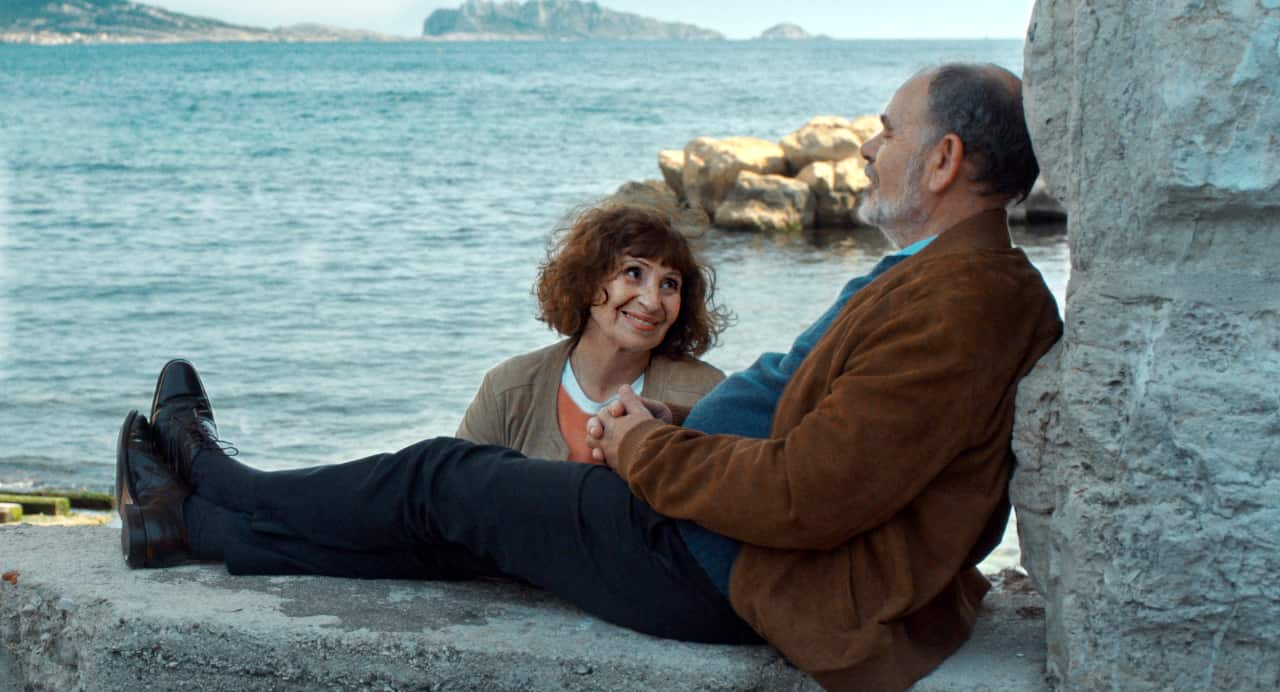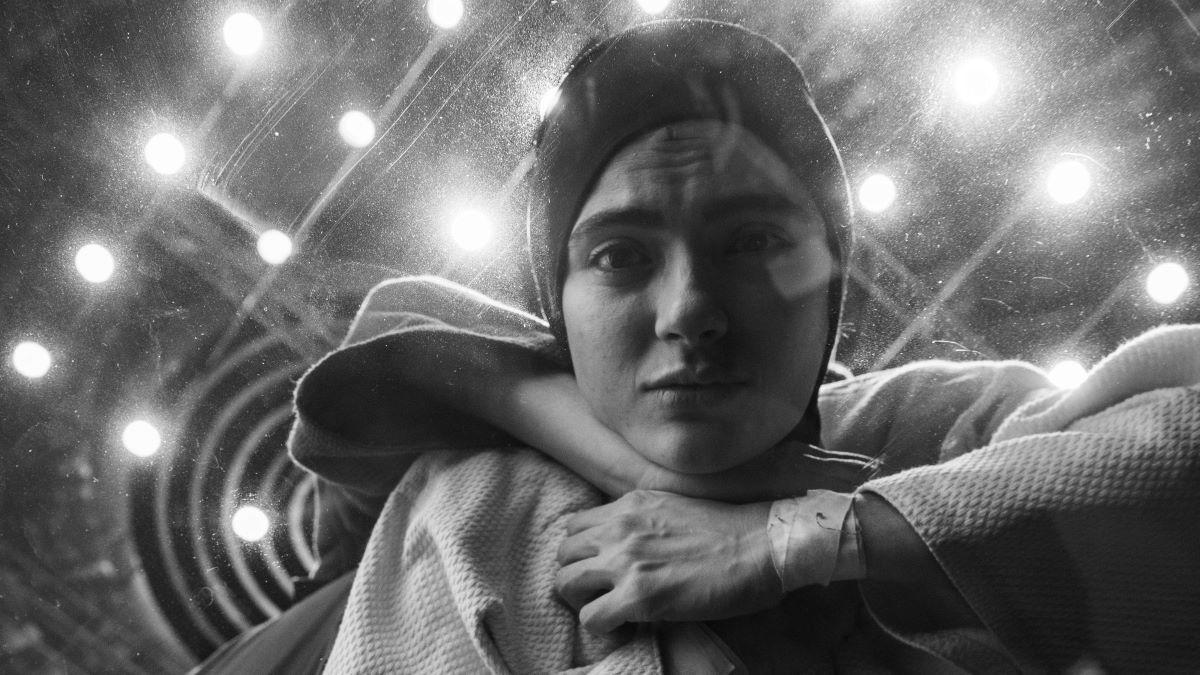by Jack Kroll
Stanley Kubrick hungers for the ultimate. In The Shining, he has gone after the ultimate horror movie, something that will make The Exorcist look like “Abbott and Costello Meet Beelzebub.” The result is the first epic horror film, a movie that is to other horror movies what his 2001: A Space Odyssey was to other space movies. In 2001 Kubrick understood that the point was not all the ravishing technology but its interaction with human beings. In The Shining, he understands that the point is not all the supernatural machinery but its effect on human beings. For all its brilliant effects, the strongest and scariest element in The Shining is the face of Jack Nicholson undergoing a metamorphosis from affectionate father to murderous demon.
Kubrick and his co-screenwriter, novelist Diane Johnson, have changed the emphasis of Stephen King’s best-selling thriller to a much more subtle and shocking balance between the natural and the supernatural. In 2001, the astronauts, venturing into outer space, become a different species. In The Shining, Jack Nicholson, venturing into the inner space of the vast Overlook Hotel in Colorado, becomes a different creature.
Nicholson plays Jack Torrance, an ex-teacher and struggling writer who signs on with his wife, Wendy (Shelley Duvall), and 7-year-old son, Danny (newcomer Danny Lloyd), to be the caretaker of the luxurious old grand hotel during the brutal winter when the resort is closed. Torrance is told by Ullman, the manager (Barry Nelson), about a horrifying incident that occurred at the hotel some years before when a previous caretaker, Grady, possibly affected by the isolation and loneliness, murdered his two little daughters with an ax, shot his wife and then blew out his brains with a shotgun. Nicholson smiles – no need to worry about anything like that with him, he says.
Obscene Evil
That smile is the first of many by Nicholson, the most eloquent smiler on the screen. The smile is the facial barometer by which we read the state of his soul as it’s sucked deeper and deeper into demonism by the black forces that infest the huge hotel. You suspect that Kubrick cast Nicholson in the part chiefly because of Nicholson’s unique face – the sharp nose, wide, mobile mouth and angled eyebrows that can redeploy themselves in an instant from sunny friendliness to Mephistophelean menace. The movies have never shown us a more haunted face than this, as the vestiges of obscene evil haunting the hotel infiltrate Torrance’s spirit. The Overlook Hotel becomes a vast but claustrophobic universe in which Torrance and his family are the aliens. Their surface affection and Blondie-and-Dagwood banter drop away to reveal the rage and frustration that lie beneath. The friendly, smiling guy from Vermont becomes a raging fiend who goes after his family with an ax.
Kubrick builds this two-hour-and-twenty-minute crescendo of terror with a mastery that is itself more than a bit demonic. He not only gets the horror, he gets the perverse beauty of horror – a major achievement. He and production designer Roy Walker created the entire Overlook Hotel in the studio. It’s one of the greatest sets in movie history an astonishing catacomb of corridors, rooms, lobbies, lounges, giant kitchens and basements, through which Kubrick’s camera, directed by his marvelous cinematographer, John Alcott, moves restlessly and relentlessly, following the Torrances as they discover the infernal forces that are the hotel’s true guests.
Kubrick’s camera moves like a haunted thing itself, whizzing behind little Danny as he pedals his tricycle furiously through the endless hallways, moving backward from Wendy as she flees desperately from the husband who has turned into a mad slaughterer, gliding beside Torrance as he lurches through the corridors with the flailing gestures and gibberish that have become his monstrous language, wheeling with dizzying velocity through the hotel’s outdoor maze where Danny goes to flee his father’s murderous pursuit. Panic and terror have never been choreographed with such exquisite rhythms, aided by Kubrick’s now-famous method of using existing recordings of music, in this case by Béla Bartók, György Ligeti and mostly by the Polish modernist Krysztof Penderecki. The soundtrack be comes a dissonant, wailing, pounding but seductive symphony of human fear as it makes contact with the irrational energies buried deep inside its heart.
Visionary Gift
This is that rare horror film in which we sense its intelligence even as it scares us. But Kubrick hasn’t perfectly balanced the inner breakdown of his characters with the occult creatures that gradually reveal themselves. (Have no fear, they won’t be revealed here). The boy, Danny, has an imaginary friend named Tony who speaks to him and shows him visions of the ax-murdered little girls, and it turns out that Dick Hallorann (Scatman Crothers), the head chef of the hotel, also has this psychic gift, which, he explains to Danny, his grandma called “shining.” But this supernatural stuff doesn’t entirely mesh with the logic of the story. The real horror of the film is expressed in Torrance’s frustration. No blood vision or demon lover or putrefying corpse is as frightening as the moment when Wendy looks at the writing that Jack has supposedly been working on and finds that it consists of reams of paper with the single sentence, “All work and no play makes Jack a dull boy,” repeated in endless typographical variations.
This scene is more frightening than, for example, the brilliant special effect in which one of the hotel’s beautiful Art Deco hallways literally begins to bleed through its wall in what becomes a torrent of blood. The sight of Torrance’s endlessly repeated sentence chills you with its revelation of a man so clogged and aching with frustrated creativity that his desire to kill doesn’t need to be explained by his seizure by sinister and suppurating creatures from a time warp of pure evil. When Torrance turns on his son in a mad rage, The Shining becomes a kind of perverse reversal of Kramer vs. Kramer, where father and son found mutual flowering in each other.
There is a grisly psychological accuracy in this that affects us more than than the spooks and haunts in the Overlook. Nevertheless, they, too, are chilling and grotesquely beautiful, as when they materialize in the deserted hotel ballroom as spectral revelers right out of The Great Gatsby. Nicholson’s Jack Torrance is a classic piece of horror acting: his metamorphosis into evil has its comic sides as well – which makes us remember that the devil is the ultimate clown. Young Danny Lloyd acts mostly with his clairvoyant eyes, and Shelley Duvall creates a figure of wifely banality that is itself frightening to behold. You notice I’ve not revealed the denouement (does Jack liquidate his kith and kin?). But one detail indicates Kubrick’s grim humor and cutting insight. As Torrance smashes a door to get at his screaming wife, he sticks his head through and grins, “Heeeeeere’s Johnny.” That’s Kubrick’s real vision of horror.
Pinned to the wall of Stanley Kubrick’s sprawling, cluttered editing room at the old Elstree Studios near London is a newspaper photo of the Joint Chiefs of Staff – a stern row of jutjawed brass. “Shades of Dr. S,” reads a scrawl on the photo, and indeed the chiefs look just like Generals Jack D. Ripper and Buck Turgidson in Kubrick’s 1964 black comedy Dr. Strangelove or: How I Learned to Stop Worrying and Love the Bomb. Another scrawl, in Kubrick’s own hand across a record jacket, says “Badly performed. Find another recording.” The music is by the composer György Ligeti, part of the score for The Shining. Satirizing generals or criticizing modern music, Stanley Kubrick acts with precision and decisiveness. He knows what he wants and he gets it. His eleven films include at least two great movies, 2001 and Dr. Strangelove, two brilliant and unsettling works, Lolita and A Clockwork Orange, and just one film that seems to have been a failure of energy, his last film, the 1975 Barry Lyndon. The personality that emerges from these works is powerful and mysterious.
Kubrick is famous for his obsessive attention to detail. He will shoot a scene over and over, looking for the combination of precise control and fortuitous nuance that turns it into magic. “Stanley’s demanding,” Jack Nicholson told Newsweek’s Janet Huck in Los Angeles. “He’ll do a scene 50 times and you have to be good to do that. There are so many ways to walk into a room, order breakfast or be frightened to death in a closet. Stanley’s approach is, how can we do it better than it’s ever been done before? It’s a big challenge. A lot of actors give him what he wants. If you don’t, he’ll beat it out of you – with a velvet glove, of course.” No one on The Shining felt that glove more than Shelley Duvall, who had perhaps the toughest job: she had to stay hysterical for nearly four months. Kubrick would say, piercingly but never raising his voice, “Shelley, that’s not it. How long do we have to wait for you to get it right?” But Duvall admits that “Stanley makes you do things you never thought you could do,” and Robert Altman, who is currently directing her in Popeye, says that she is a changed artist since she suffered with Kubrick for nearly a year.
Fifty Takes
Scatman Crothers, the veteran actor and song-and-dance man, had never heard of Kubrick until he was chosen for the film. Kubrick got a performance of sweetness and clarity out of Crothers. “In one scene,” recalls Scatman, “I had to get out of a snowcat and walk across the street, no dialogue. Forty takes. He had Jack Nicholson walk across the street, no dialogue. Fifty takes. He had Shelley, Jack and the kid walk across the street. Eighty-takes, man, he always wants something new and he doesn’t stop until he gets it.”
From the time he was a kid in the Bronx making his first movie, Fear and Desire, Kubrick’s impulse has been to master every element of the filmmaking process. “Stanley’s good on sound,” says Nicholson. “So are a lot of directors, but Stanley’s good on designing a new harness. Stanley’s good on the color of the mike, Stanley’s good about the merchant he bought the mike from. Stanley’s good about the merchant’s daughter who needs some dental work. Stanley’s good.” John Alcott, who’s made four films with Kubrick, credits the director with making him into a cinematographer. “He inspired me,” says Alcott. “If Stanley was a cinematographer he’d be the most sought-after one in the world. For many films after I’ve worked on a Kubrick film, I’m using ideas he gave me.” As Scatman Crothers puts it, “Stanley’s like a god. He sees everything and hears everything.”
Like most gods, Kubrick is not always easy to deal with. There were reports that relations between Nicholson and Kubrick sometimes turned into a battle of the giants. “I’m a great off-stage grumbler,” says Nicholson. “I complained that he was the only director to light the sets with no stand-ins. We had to be there even to be lit. Just because you’re a perfectionist doesn’t mean you’re perfect.”
Disarming Logic
Kubrick would be the last god to claim perfection. He’s become a movie-business legend for his obsession with privacy as well as with filming. When he made Lolita in England in 1961, he decided to move there. He lives in a rambling house outside London with his wife, Christiane, a painter, and his three daughters, and he hasn’t been back to the United States since 1968. “I haven’t had the time,” he says with disarming logic. “I’m constantly involved with making films. And if you don’t fly it’s a bloody inconvenient trip.” Kubrick is famous for his fear of flying, doubly striking because he once held a pilot’s license. “I love airplanes but I don’t like to be in them,” he says. “I began to be aware of the unsafe aspects of flying and they got to my imagination.”
Kubrick’s imagination is unlike any other moviemaker’s. He’s been accused of being cold and emotionless, but the truth seems to be that he’s a man of very strong feeling who’s made an immense effort to control his emotion. “I used to play chess twelve hours a day,” he say. “You sit at the board and suddenly your heart leaps. Your hand trembles to pick up the piece and move it. But what chess teaches you is that you must sit there calmly and think about whether it’s really a good idea and whether there are other, better ideas.”
The view of humankind implicit in A Clockwork Orange, 2001, Barry Lyndon, and now The Shining seems anything but warm and hopeful, but Kubrick insists he’s simply being “objective.” He insists that he was interested in The Shining as an ingenious example of the ghost-story genre but, if you press him hard (“You’re backing me up against the wall,” he says), he admits to deeper implications in the story. “There’s something inherently wrong with the human personality,” he says. “There’s an evil side to it. One of the things that horror stories can do is to show us the archetypes of the unconscious: we can see the dark side without having to confront it directly. Also, ghost stories appeal to our craving for immortality. If you can be afraid of a ghost, then you have to believe that a ghost may exist. And if a ghost exists, then oblivion might not be the end.”
More than any other director, Kubrick in his films seems to construct an alternate reality, something more logical and precise than the real world with its sloppy design and dangerous leaps of the unthinking heart. This explains his love for the technical and formal sides of filmmaking. “Eisenstein does it with cuts,” he says. “Max Ophüls does it with fluid movement. Chaplin does it with nothing. Eisenstein seems to be all form and no content, Chaplin is all content and little form. Nobody could have shot a film in a more pedestrian way than Chaplin. Nobody could have paid less attention to story than Eisenstein. Alexander Nevsky is, after all, a pretty dopey story. Potemkin is built around a heavy propaganda story. But both are great filmmakers.”
Mistakes
Kubrick insists he hasn’t changed, but simply become aware of more things. “I breezed through Paths of Glory without being aware of many things I now see are mistakes. The more you learn about an art form the more difficult it becomes because you create harder rules for yourself.” Is Kubrick – at 51, engaging, soft-spoken, but clearly self-protective – happy? “I’m happy – at times – making films,” he says. “I’m certainly unhappy not making films.”
Maybe Scatman Crothers sees the complex Kubrick best, in a song he wrote during the making of The Shining:
There’s a man lives in London town,
Makes movies, he’s world-renowned.
Yes, he’s really got the fame,
Stanley Kubrick is his name.
He does it all, he does it all,
Stanley does it all…
He’s a man who looks ahead
To make you think he raised the dead
And he cuts all his flicks,
He’s a genius with his tricks.
He does it all, he does it all.
I’m tellin’ y’all, Stanley does it all.
Published in Newsweek magazine, June 2, 1980, pp.52-54





1 thought on “THE SHINING: STANLEY KUBRICK’S HORROR SHOW – Review by Jack Kroll [Newsweek]”
In 2018, ‘SHINING’ has emerged as an allegory and expose of the subversion and overthrow of both
Britain and the American republic by the inter–generational and international USURY mafia.
1980 remember, was the heyday of RED CHINA TREASON.
It was also the year of mass Medea’s big push by OPRAH et al to ‘mainstream’ knifing the unborn
in the name of ‘convenience’ – – -‘self realization’ – – -and ‘serving the sis–dom’.
Hence Danny’s blood flood elevator vision.
Take another look, and note too, every single man in the film reads, and is intended to be read, as
before birth subverted FTM.
BEHOLD the POST America put away project – – — laid bare !